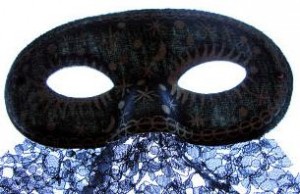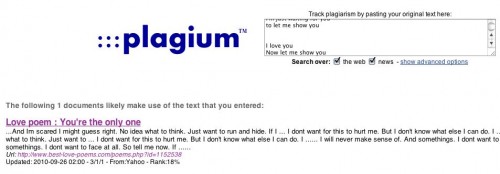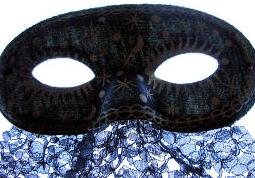Case Study: Tracking a Sneaky Plagiarist Poet
 Miriam Short-Poncer is someone whose judgement I trust. A member of the PaganSpace community site, Miriam has done a great deal of good work in fighting plagiarism on the site. Back in May, she notified me that she suspected a member of plagiarizing my poetry and tracked me down to my Plagiarism Today account.
Miriam Short-Poncer is someone whose judgement I trust. A member of the PaganSpace community site, Miriam has done a great deal of good work in fighting plagiarism on the site. Back in May, she notified me that she suspected a member of plagiarizing my poetry and tracked me down to my Plagiarism Today account.
So. when she forwarded me a poem posted by another community member, I had no reason to question that she was right.
But what should have been just a routine case of tracking down a potentially plagiarized work turned out to be an interesting case study in plagiarism detection, especially with poetry, and may have highlighted a weakness in Copyscape and a strength in Plagium.
This makes it a case worth reviewing as it may help others in a similar position track their work online and detect infringing works posted to their sites.
With that in mind, here’s what happened and what we can learn from it. .
Tracking a Plagiarist Poet
PaganSpace, like a lot of other niche communities, allows members to create blogs, profile and post to forums Also like any community that becomes large enough, it has a few people who don’t post original works and, instead, post the works of others. This is a major violation of the community’s rules and is handled swiftly.
According to Miriam, one particular member had been behaving very suspiciously, posting images of herself that were clearly professional models (I was able to confirm this in at least two cases), claiming to have written a book and other inconsistencies. So when this person published a poem to her blog, she was instantly suspicious.
However, she was unable to track down the source herself and turned it over to me in hopes that I would have better luck.
I cursed the fact it had to be a poem, knowing first hand how difficult it is to track poetry plagiarism on the Web, but decided to give it a shot. After a quick read to find some unique lines, I started off by doing the same thing she probably did, copying three lines from the poem and pasting them into Google.
Each one turned up negative.
I then decided to try a different technique, I copied and pasted the poem into my Copyscape premium account. Once again, it came up with nothing.

At this point, I was beginning to wonder if the work could be genuine or at least so heavily modified that there was no way to track it back. Still, being both her friend and being in her debt for her help, I decided to give it another try.
I read the poem more thoroughly, analyzing it line by line. It had all the hallmarks of a plagiarized piece that had been partly rewritten. There were inconsistencies in the language, odd word choices and changes in the language. Where most of the poem seemed to be in very plain tones, some of the passages shifted to a wordy, almost formal tone.
Realizing I had selected the wordy passages in my original tests, largely because they were more likely to be unique, I changed strategies and searched for one of the more plain lines. It was there I hit pay dirt and found this poem.
After a side-by-site comparison of the two works, I could see that there were a lot of differences, the plagiarized copy was barely half the length of the original and had several new lines, but it was clearly a plagiarism. Not only were the first stanzas in both identical, but they both copied a punctuation error, namely the lack of an apostrophe in “I’m”.
Curious, I decided to give Plagium a shot at detecting the poem and it actually came through quite well.

Still all of this raises some serious questions about why the detection was so difficult and why one of the best plagiarism checkers couldn’t spot it. A brief look at the two poems and it was easy to see why.
Comparing the Works
What was interesting about this case is that the plagiarized work had a very interesting mix of old content and new content. For example, the first stanzas in both of the works were identical, including typo (original on left):

But the second stanza shows the kind of rewriting done through most of the poem (original on left):

The first two lines in the second stanza were combined in the latter work. The second line in the latter matches perfectly the third line in the original and the fourth line of that stanza for the duplicate appears to be original.
That type of rewriting continues for much of the work, combining lines, combining stanzas, adding new material and repurposing many sections wholesale. All in all, about a third of the content is directly lifted from the original, another third is rewritten and the last third is original.
It certainly is not an original work, but it is very difficult to detect as a plagiarism.
Lessons Learned
Through it all, there were several lessons that can be gleaned from this very strange and difficult case:
- Editing a Work is Inefficient for Avoiding Detection: Though it is possible to edit a work enough to make it impossible to detect its source, doing so requires a great deal of time and work. Already a great deal went into editing this poem and it was still able to be detected, albeit with trouble.
- Plagium May Have an Upper Hand: Though it’s just one case, it is clear Plagium came through when Copyscape didn’t. It may be a sign Plagium is better for this type of detection, especially with poetry. This mirrors my own results from when I first learned of the service.
- You Can’t Replace Intuition: Though technology can help a great deal, nothing replaces intuition. The number of times intuition has failed me is far less than the number of times technology has failed me in this area. There is no substitute for human analysis.
Though this case may not be the most difficult I’ve handled or one of the worst I’ve seen, it’s an interesting microcosm of just some of the challenges I face every day in detecting and stopping plagiarism.
Bottom Line
In the end, I want to give thanks to Miriam for her permission in using this case as an example. I greatly appreciate the opportunity to talk about the types of things I do all day.
Also, as you may have noticed, I have not linked to or pasted in the plagiarized work, out of respect to the original author (I was not able to contact her without signing up for an account on her poetry site) and because PaganSpace is still completing its investigation. However, the plagiarized work, along with the images I discovered, have been removed and the profile of the person involved has been set to private. The administrator of the site responded very swiftly when notified of these problems.
All in all though, it does seem to be a pretty clear-cut case and, when combined with the use of professional photos to represent herself, it seems almost certain that there is more to this story. However, at this time I’ve done all that I can and, in the process, created a great case study for helping others (and myself) better track down plagiarists.
Want to Reuse or Republish this Content?
If you want to feature this article in your site, classroom or elsewhere, just let us know! We usually grant permission within 24 hours.
